Individual heating and its main advantages
As you know, the comfort of living in a house or apartment largely depends on heating communications, especially since in our latitudes the cold period of the year is quite long and is characterized by low temperature values. In most apartment buildings there is a centralized heating system, which often has many complaints, but every year individual heating, which is successfully used in the private sector, is becoming more and more popular, this is the option we will consider.
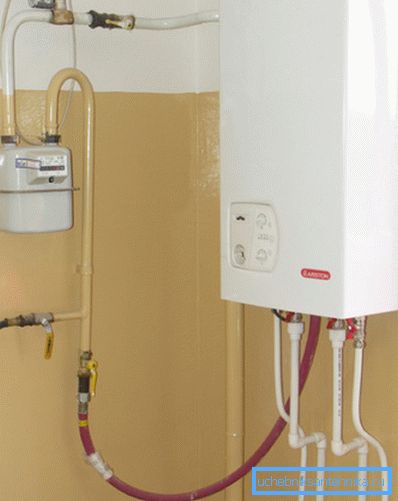
Benefits of the standalone option
The growing popularity that individual heating is acquiring is due to a number of factors:
| Independence | You will not suffer from accidents on heating lines, breakdowns in the hub, and so on. The only requirement is a continuous supply of energy (it can be both electricity and natural gas). |
| Comfort | Thanks to individual systems, you can adjust the room temperature yourself. No need to wait for the beginning of the heating season, because you can turn on the boiler at any time when it is necessary |
| Saving | As practice shows, individual heating systems can reduce heating costs by 2-2.5 times. At the same time, you also do not pay for hot water, the boiler is able to heat it yourself, and it will also be much cheaper than the centralized option. |
| Simplicity | Although the initial price of all equipment is quite high, its maintenance is much cheaper. The system is autonomous and able to work without interference for months, it is only necessary to control the pressure in the system. |

Design and installation features
If individual heating in a private house can be put without any obstacles, it is enough to comply with safety standards, then in apartment buildings everything is much more complicated. That is why we will consider this option in more detail and in detail.
Legislative nuances
Since the law on individual heating is absent as such, in many localities permits for the installation of autonomous communications are issued at the discretion of local housing and utilities agencies, and decisions are not always objective.
Meanwhile, there are the following legal acts:
- Law No. 190-F3 “On Heat Supply” dated July 27, 2010, regulates the basic requirements for individual systems and restrictions on their installation.
- Government Decree No. 307, published in 2012, describes the main parameters and requirements that the heating equipment must meet.
According to the Resolution, for installation in apartments, only equipment that meets the following criteria is allowed:
- In the domestic boiler for the heating system must be sealed combustion chamber.

- The temperature of the coolant should not exceed 95 degrees.
- The pressure in the system should not rise above the mark of 1 MPa.
- The system should include automation that stops the operation of equipment in the event of gas or electricity interruptions, as well as when the temperature rises or faults in the flue gas discharge system.
Note! Very often, utilities refuse to install an individual heating system on the basis of clause 15 of the Law on Heat Supply. This ground can be challenged in a court that declares it illegal and without grounds, there are precedents.

Sequence of preparatory activities
To carry out all work in accordance with the law and to avoid fines and other administrative measures, it is necessary to strictly observe the following sequence:
- The first step is to obtain permission from the competent authorities to carry out conversion or installation of the system (if the work is done in new homes). This may take a long time, so it’s best to take care of this document well in advance.
- Next, a project is being developed, which must be approved by the supervisory authority. The individual heating scheme should provide all the necessary nuances: the installation site of the boiler, the location of various distribution and control units, etc.
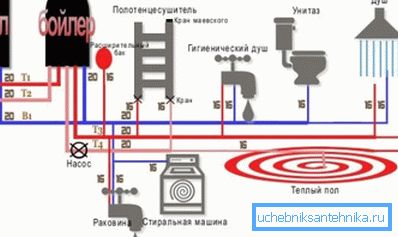
- The next step is the installation of the boiler and its connection to all the required communications, it is very important to do everything correctly and scrupulously. Instructions for connecting the heat generator is required to study if you do the work yourself.
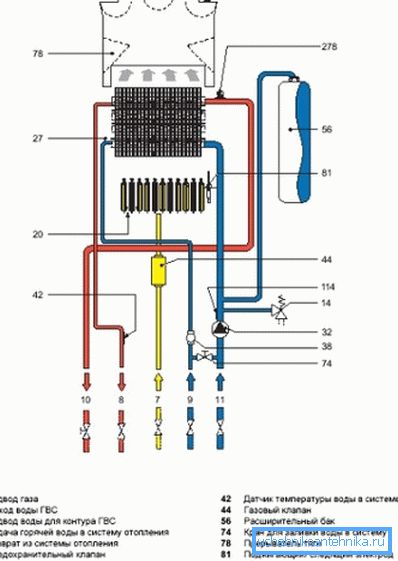
- The transition from the centralized to the individual version is done with the involvement of housing and utilities specialists, they cut you off from the supply line, and you make a new circuit through the heating boiler.
- After that, the pipe layout and docking of all the necessary elements are done. Old communications can be left with them, but it is better to redo the system and install thin pipes and new radiators for individual heating with improved heat dissipation.
- The penultimate operation is to check the system for tightness, it is filled with water, air is drained from the radiators, and all connections are thoroughly checked for leaks.
- The last thing to be done is to put the boiler into operation. It is made only in the presence of a specialist from the relevant organization, who confirms that the system is ready for operation and complies with safety standards.
Tip! In no case do not start work until you receive permission, promises to provide a document by any deadline may not be fulfilled, and then you will have to pay fines for unauthorized work.
Boiler selection
There are two main options, consider each of them in more detail, in order to choose the best option for your home.
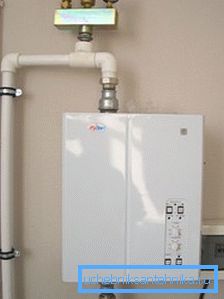
Electric boilers for individual heating have the following features:
- This is the only option in homes that are not connected to the gas supply system..
- Does not need gas supply sensors and is environmentally friendly., because there are no products harmful to the environment for combustion.
- The automatic protection system turns off the equipment in case of malfunctions, allowing you to not worry about security.
- The equipment is absolutely silent, which is important when installing it in the kitchen or in another room where people are often located.
This option has disadvantages:
- The need to lay a separate line for power supply, and if the equipment power is over 6 kW, then a 380-volt line and a special permit are required.
- The price of heating is higher than that of the equipment, which we will consider below.
Gas boilers for individual heating are used much more often due to the following reasons:
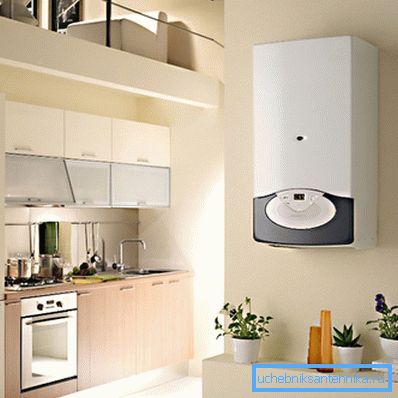
- The low price of heating due to the low cost of gas and higher efficiency.
- Autonomy of work and equipment reliability. Numerous sensors allow you to protect yourself from unforeseen situations arising as a result of system failures.
- Ease of use - you can set the heating mode, in which the temperature will change during the day depending on whether there are people in the room or not.
Among the shortcomings, it is possible to highlight the need for obtaining permission to use gas equipment (houses with individual heating do not require such permits) and, albeit small, but noise during operation.
In general, an individual heating system fully justifies the investment in 2-3 seasons, and the convenience and efficiency of this option is several times higher than that of centralized communications. It is important to do all the work correctly in compliance with the requirements and regulations.

Conclusion
Individual heating can be implemented in almost any house or apartment, do not believe the rumors that getting permission is almost impossible, in practice, everything is much easier than it seems at first glance. The video posted in this article will clearly show some features of the workflow.